In beautiful Burgundy France, Automotive Artist Stanley Rose has his studio. His artworks are paintings which just happen to have cars in them with an association to the clothing and era of the painting, unlocking a unique story.
Stan, do you consider yourself an artist or an automotive artist?
I consider myself an automotive artist. I don’t hide the fact that my artwork is illustrative and that’s not a negative but it’s not quite the same as contemporary fine art, as the Americans like to call it. I think you can have really good automotive illustrative art. The artists are excited by the automobile and that is present in their paintings.
In most of your paintings, there is always a car whether it’s a little toy module on the table or hidden behind a tractor.
My artworks are paintings which just happen to have cars in them. They are not paintings of specific cars but more about the people. The cars are one of the most important elements in the picture because without the car, the story is lost. So you have for example a person in clothing from a certain era and the car sets off that period. There is an association between the figures I paint, the period in which they are painted and their association with cars.
I did a series of old 1940’s Harleys and 1940’s cars in the background. That’s all about period pieces. I just love painting the mechanical stuff which is exposed on a motorbike. Just like Bugattis’ which are one of my favourite cars to paint because a lot of the engineering is exposed around the wheels and suspension etc.
The type of cars you paint are Bentleys, Bugattis, Alpha etc. Is that because they have so much detail?
Yes, the pre-war race cars are my most favourite to paint. Also because they give an element of style and period. I use other elements to create the sense of an era, like pastel shades. When I do black and white paintings, I use pastel colours to try to create those feelings of that era. It’s not just an illustration of a car, there are lots of elements.
You put a lot of focus on fashion. Ladies standing in front of the car etc.
I work with several different era’s and use the appropriate car for the era I am painting. For instance, some of my paintings are of 1950’s Americana , a leather jacket, a guy with a coke bottle etc. The idea is quite simple but it’s quite hard to create a feeling of that era. Just to have an illustration of the car, a Buick for example, which is a great looking car, is not very interesting. So I put it as part of a scene.
Looking at your paintings, I can make up a story. Is that your purpose. To trigger the fantasy?
Absolutely. What I do is put all the elements together which make it quite mysterious. At exhibitions, people group together around a painting and they tell me the story of what is going on, which is perfect. It’s about the message the painting is sending out to the individual who is looking at it. My method of working is that I’ve usually got a plan. I always start off with a person and the clothing. For example, my paintings which have people in them with overalls. I then look for scenario’s in which I can put those people. They can be laying underneath the car of standing behind it with a wheel and sometimes those people in overalls are not necessarily guys. They can be females.
That’s what I like. For example, your painting with the Aston. It looks like a grease monkey but at closer inspection, you see it’s a lady.
Exactly. The size of the paintings are really important too. They are quite big paintings, almost life size. So when you stand in front of them, they have a huge impact. That’s a problem with the web, you have no idea of scale. People ask if I have a problem taking my paintings to exhibitions or with finding room for my paintings. They also sometimes ask me why I don’t make the paintings smaller and I tell them that you can’t do it on a small scale. It doesn’t work because the method of painting is really important to me as well. All the paintings I do are painted twice. They are all painted in acrylics to start with and so all the backgrounds, figures, cars etc. are painted in acrylics. I paint them really quickly with splashes and drips etc. and they have a water colour look about them in places. I then paint over the top of the acrylic with oil paint to bring out the detail in the area’s that I want detailed. Where there is a figure involved, I bring out the detail in the clothing but not all the clothing, just a part of it and you see it sort of fading into the background around the edges of the person. So you get this mixture of stuff painted really quickly but there is this fantastic detail in the picture as well. People don’t realize this and think the detail has appeared by magic. But it’s not. There is a system to it and it’s quite difficult to explain without showing someone.
Do you use models to pose for you Stan?
It depends. These days it’s like anything else, I have to work with whatever I can get hold of. I have my ideas and draw things which could be of interest to me. It’s mainly figures and then cars which go with those figures. The first thing I do is research the clothing. I have a big wardrobe of 1940’s and 50s stuff which I buy on e-bay and second hand shops.
For commissioned work, I usually ask the people to bring a selection of the clothing of the era they want painted. I need to choose the clothing which gives the right colour that goes with the car and the other elements. Then I have to find a model who fits the clothing and have friends who do this for me. So I make drawings of those models with the clothing on and depending on whether they are going to be highly detailed or not, I then photograph the stance of the person; how they will be standing in each painting. Because I have the clothing, I work from that directly. For example, a leather jacket. I have it there in front of me to paint all the cracks and creases but I paint it on the person who was modelling it for me. With cars, I photograph lots of cars when I am visiting classic car shows with the idea in mind that it may be used in a painting. I photograph a lot of angles and profile views of cars which you don’t see in magazines. I have my own photographic collection and use those to fit a particular scene. There is usually a third element in the foreground of the painting which could be an animal or a motorbike for example. I then put all three things together.
It must be quite a challenge putting all the elements together in one painting regarding the lighting etc. I really admire your colour combinations which blend in wonderfully.
In most of the paintings, the car is often the most important part of the painting because it takes up most of the picture. Then there is the figure in the background. Once I have an idea of what I am going to put in the painting, I build up the textures and then I draw the car onto those textures. I rough in the car in acrylic quite quickly, allowing the splashes and drips and then I start bringing out the detail. All the time I am making judgements about how much detail I am going to bring out.
Some artists focus on a certain type of car or are specialized in grand prix racing etc. I don’t. My approach is that I am doing a painting and I have my style which is developed, and really the painting has to come. They are more themes really but the style and method of working remain the same.
Do you keep on developing your style? I saw a painting you did from a Norman Rockwell artwork. Does he inspire you?
There is a story behind that. All my paintings had single figures in them and they didn’t have heads. One day I decided I wanted to have two people in my paintings but when you have two people in a painting, it’s weird if they don’t have their heads on because they are usually relating to each other.
The only painting I really like of Normen Rockwell is the one I used with the guys in the cafe. I love the composition of that painting. I did two version of it but mine were much bigger than his and a bit more detailed. The first thing I had to do was find all the clothing. Then I set the scene up in my studio and tried to match the composition of that painting exactly. I invited loads of people with the right age and look, positioned them exactly and photographed them. I had to build the whole scene up like that and did the drawings from the photographs. I put it altogether but painted a different background through the window. What inspired me to do that painting was to have a lot of people and faces all reacting to each other. There are a number of paintings I did, which include portraits. One is of a guy sitting on a garage bench in a workshop holding a mug of coffee and he’s got all the mechanical elements and tools around him. That was immediately after my Normen Rockwell style painting and although it has got a little bit of influence from that original painting, I am not really inspired by Normen Rockwell.
So that was a kind of a challenge for you Stan?
Yes, it was a way of helping me through that stage of how to organize something with more than one person in the picture. In that Normen Rockwell composition, all the people were interacting with each other and it inspired me. And of course all the portraits of the people in my painting are all the portraits of my friends. That painting was about 1 square meters and it was great but it doesn’t contain any of the dribbles and splashes that I like.
How do you get your ideas?
It depends. BB King died recently and I thought I would do a homage to him in black and white which is part of setting the scene from an era of black and white photography. The trouble is when you start doing people like BB King, you need photographic material and that was a problem. Surfing for photo’s on the web is difficult because the resolution is so low. I ended up buying a picture of BB King and I did find a Johnny Lee Hooker photo in another book. I borrowed a friend’s guitar and got another friend to hold the guitar in the right position and drew his hands. So these paintings don’t just come from ripping off a photo. It’s complicated and that’s my method of working, sticking things together which is why it takes four weeks to do a painting.
You mentioned that your paintings always need to be large. Some artists say it requires more physical involvement as well. Is that the case for you?
When you are painting broad brush strokes and moving your right arm across the canvas quite quickly to create splashes, the canvas has to be quite big to catch all that because on a small scale, it wouldn’t work. The scale is important and you can’t downscale it because you then change the whole context of the painting. It looks different. That’s the reason for the size.
Visit http://stanley-rose.com/ to see more work from Stanley Rose.

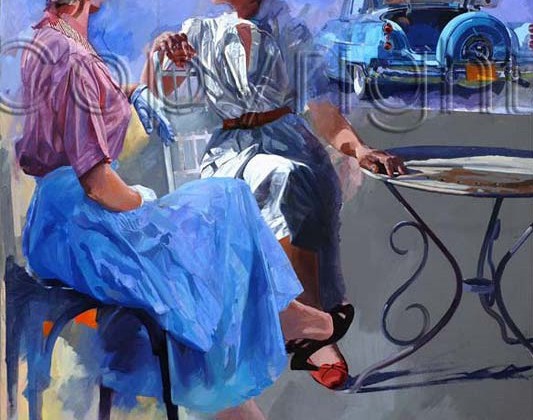

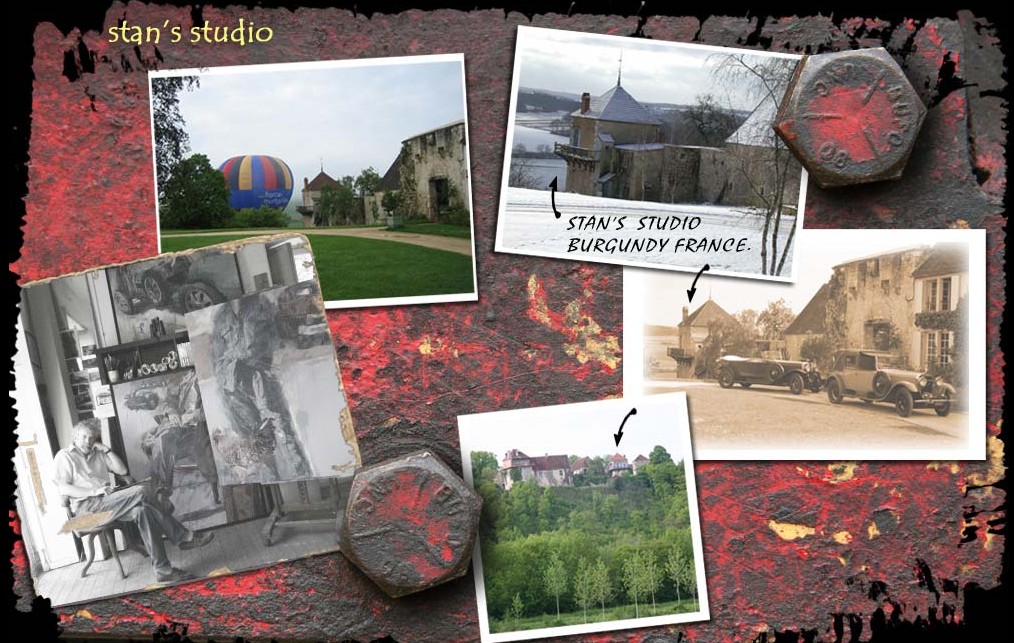
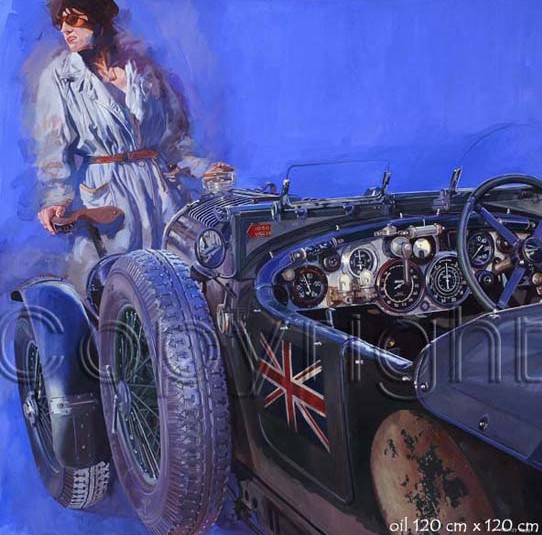
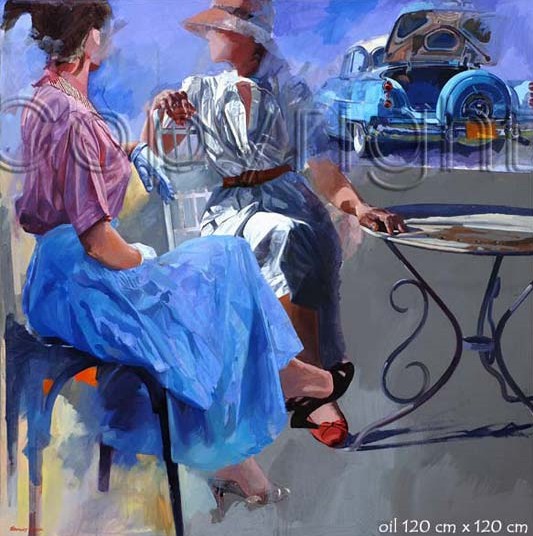
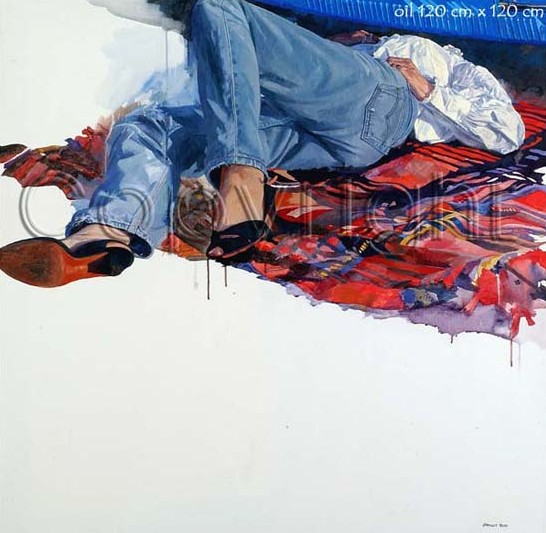
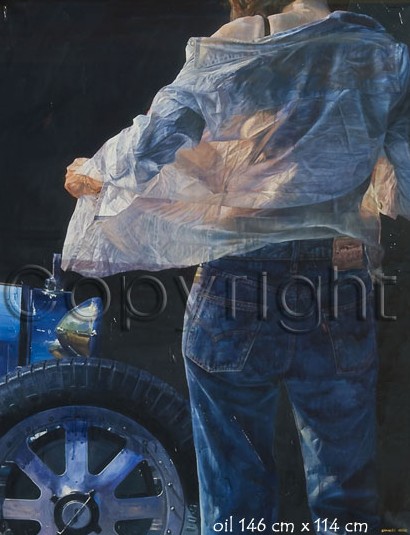
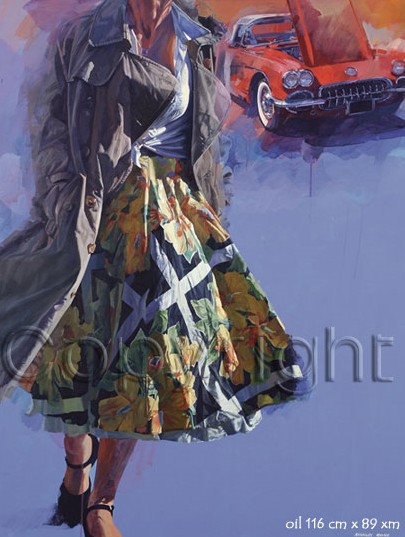
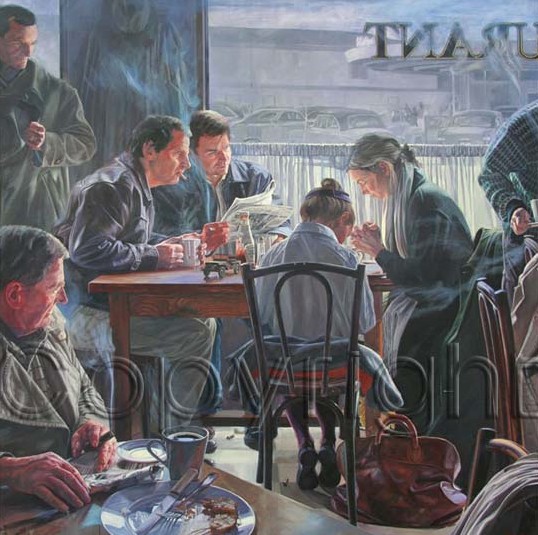
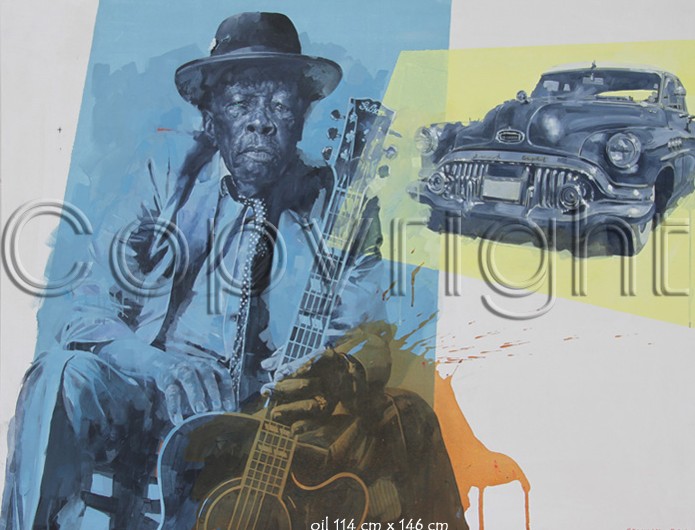

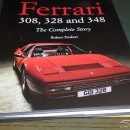
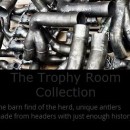
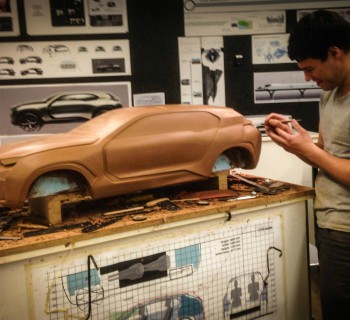
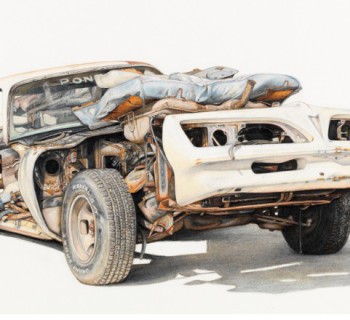
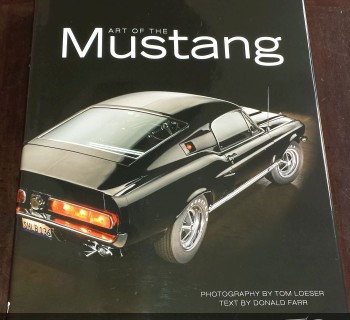
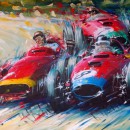
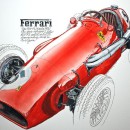
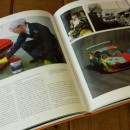


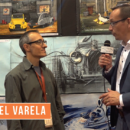
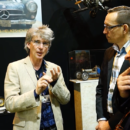
[…] I agree. I learned a lot from Stanley Rose. He is the person who taught me to be more confident on how to put the brush strokes onto canvas […]